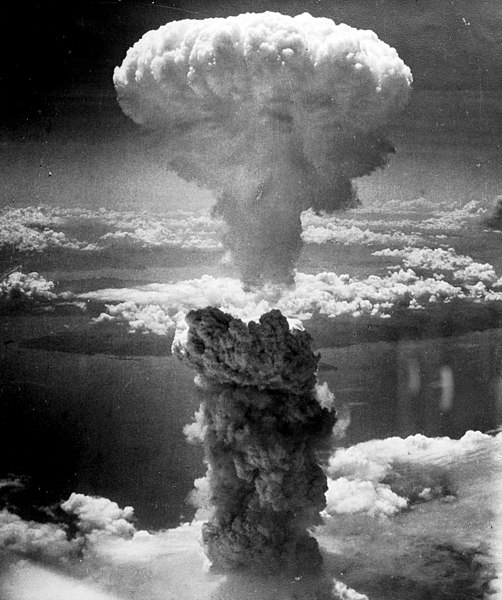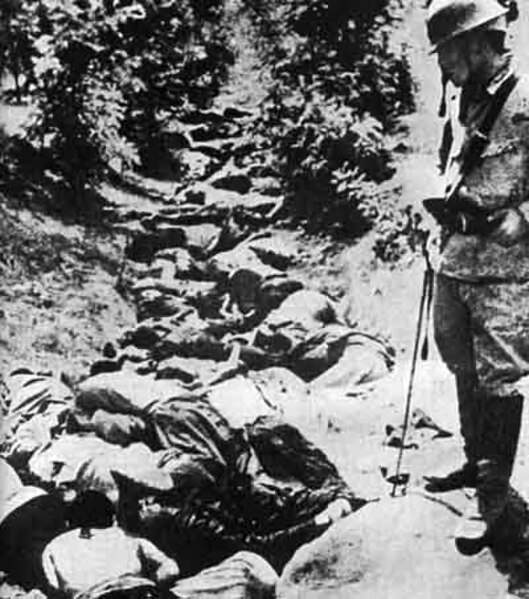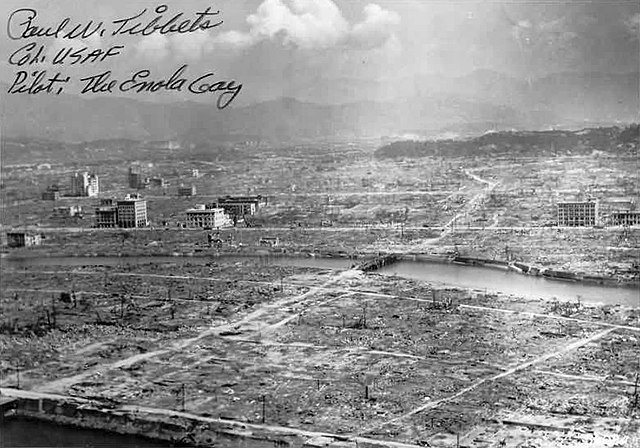Debate over the atomic bombings of Hiroshima and Nagasaki
Substantial debate exists over the ethical, legal, and military aspects of the atomic bombings of Hiroshima and Nagasaki on 6 August and 9 August 1945 at the close of World War II (1939–45).
The Fat Man mushroom cloud resulting from the nuclear explosion over Nagasaki rises into the air from the hypocenter.
March 1946's Operation Coronet was planned to take Tokyo with a landing of 25 divisions, compared to D-Day's 12 divisions.
This Tokyo residential section was virtually destroyed following the Operation Meetinghouse fire-bombing of Tokyo on the night of 9/10 March 1945, which was the single deadliest air raid in human history; with a greater loss of life than the nuclear bombings of Hiroshima or Nagasaki as single events or a greater civilian death toll and area of fire damage than both nuclear bombings combined.
Chinese civilians massacred during Japan's campaign of total war in Xuzhou
The nuclear weapons debate refers to the controversies surrounding the threat, use and stockpiling of nuclear weapons. Even before the first nuclear weapons had been developed, scientists involved with the Manhattan Project were divided over the use of the weapon. The only time nuclear weapons have been used in warfare was during the final stages of World War II when USAAF B-29 Superfortress bombers dropped atomic bombs on the Japanese cities of Hiroshima and Nagasaki in early August 1945. The role of the bombings in Japan's surrender and the U.S.'s ethical justification for them have been the subject of scholarly and popular debate for decades.
Since the atomic bombings of Hiroshima and Nagasaki, nuclear weapons have remained highly controversial and contentious objects in the forum of public debate.
The Fat Man mushroom cloud resulting from the nuclear explosion over Nagasaki.





